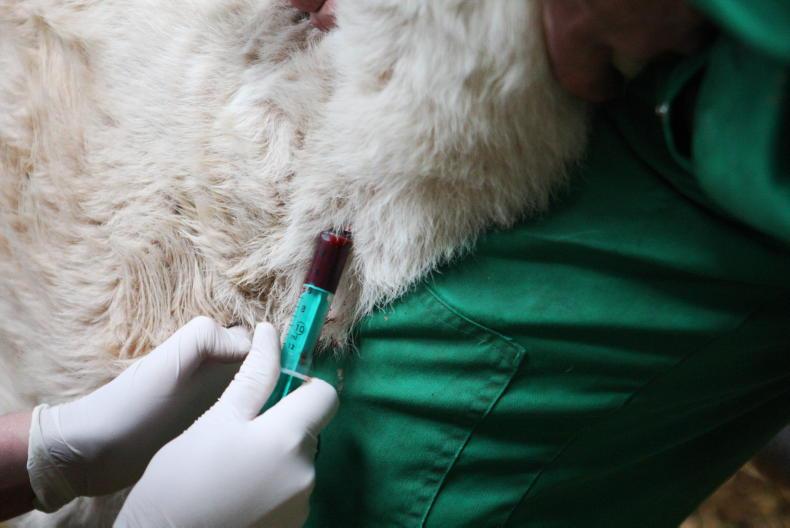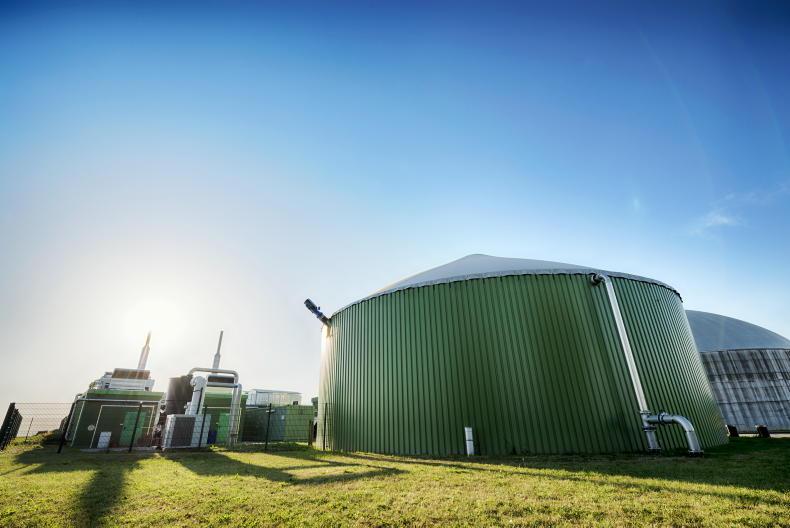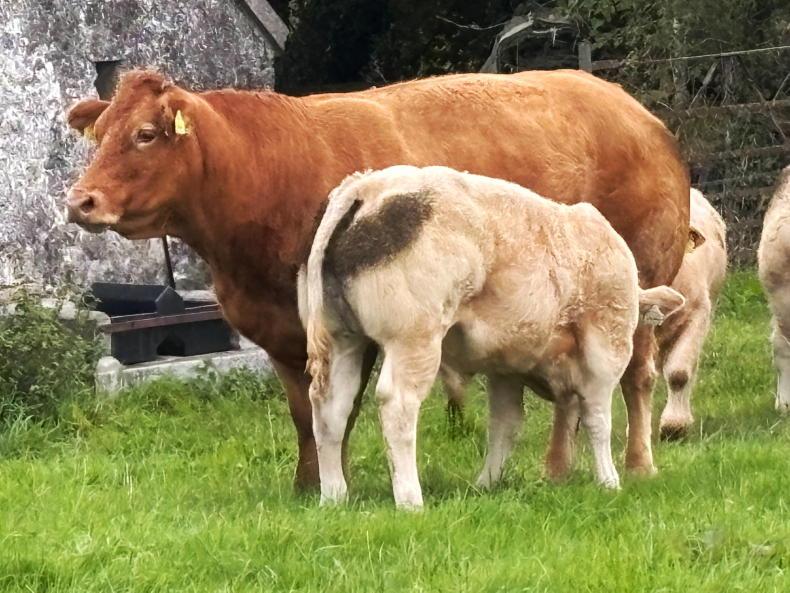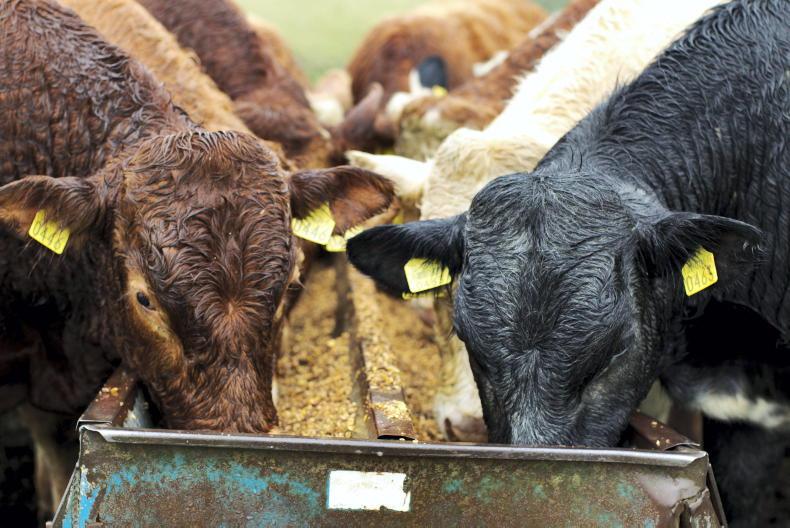Just when we think we’ve seen it all, yet another unusual spell of weather comes along, and farming has to deal with a completely new situation.
The lack of rainfall from mid-March until June is surely unprecedented in this country.
What was initially welcomed and celebrated as perfect farming conditions gradually saw us anxiously scanning medium-term forecasts, before finally accepting that more drastic measures were necessary to keep stock thriving.
On this farm, these actions took the form of extra fertiliser, more concentrate, and the temporary feeding of silage bales to eke out disappearing grass supplies.
For me, the most difficult time is just before those hard decisions are taken. Once you bite the bullet and lift the phone to order meal and buy fertiliser, some of the pressure is immediately released.
By contrast, I find that earlier stage far more frustrating; shunting stock around the farm in ever-decreasing circles, pretending there’s enough fresh grass ahead of them when there obviously isn’t, and trying to deal with lambs that have become virtual contortionists in their efforts to seek a fresh bite.
Most of the phone conversations in recent weeks were from concerned neighbours, and went something along the lines of, “Derek, do you know there are two lambs grazing along the Kilmood Road?”
Once lambs discover they can force themselves below the bottom rung of a field gate, or over the top of drunken and dilapidated sheep wire, they are almost impossible to stop.
I put a few back into the field one morning, and while I walked back to the pickup for wire and baler twine, one of the lambs was lying on its side, scrabbling with its little hooves as it tried to squeeze through between the bottom bar and the shallow depression left from a tractor wheel mark in the wintertime.
In this instance, a broken fence post tied across and swinging from the gate wasn’t enough, and a concrete block was added as an insurance measure.
Positives
There were positives too from the dry weather. Up to the point when things became a bit desperate, stock had been thriving well.
It’s easy to forget the frustrations of a wet summer, when livestock are damaging grass, and the backs of the hedges are tramped into a quagmire. The difference between leaving the house during spells of warm, settled weather, and those windy, wet mornings is stark. I find there are almost no jobs that cannot be done in fine weather, but an awful lot that are awkward or impossible if it’s raining.
Dilemma
I am now faced with another dilemma. With the return of the rain and the resultant explosion in grass growth, I have weaned half the remaining lambs on to suitable after-grass from silage swards. These lambs have been eating creep feed for over a month now, and I have completely removed it from their diet. Should I have continued? Even temporarily? Will the change in diet result in hundreds of scouring animals?
It’s probably worth mentioning another outcome from the dry weather – I haven’t dosed any lambs yet. I assume that worm eggs must become desiccated to some extent, since lamb thrive has been good, and there are almost no dirty tails so far. That may be about to change.
Claim
For years, I have listened to advocates of creep feeding telling the same story. They claim that lambs don’t eat all that much, and significant quantities of concentrate are not used. Well, I wish someone would explain that theory to my lambs, because the word I’d use to describe their ravenous appetites is “frightening”.
Typically, I would tip in about forty kilos of blend to maybe 80 lambs, and it would be licked clean in under an hour. I honestly believe some of the stronger lambs consumed 1kg apiece in one sitting. I must be working with the wrong breed of sheep.
Read more
An idle mind is a dangerous thing
Watch: still learning after 40 years lambing
Just when we think we’ve seen it all, yet another unusual spell of weather comes along, and farming has to deal with a completely new situation.
The lack of rainfall from mid-March until June is surely unprecedented in this country.
What was initially welcomed and celebrated as perfect farming conditions gradually saw us anxiously scanning medium-term forecasts, before finally accepting that more drastic measures were necessary to keep stock thriving.
On this farm, these actions took the form of extra fertiliser, more concentrate, and the temporary feeding of silage bales to eke out disappearing grass supplies.
For me, the most difficult time is just before those hard decisions are taken. Once you bite the bullet and lift the phone to order meal and buy fertiliser, some of the pressure is immediately released.
By contrast, I find that earlier stage far more frustrating; shunting stock around the farm in ever-decreasing circles, pretending there’s enough fresh grass ahead of them when there obviously isn’t, and trying to deal with lambs that have become virtual contortionists in their efforts to seek a fresh bite.
Most of the phone conversations in recent weeks were from concerned neighbours, and went something along the lines of, “Derek, do you know there are two lambs grazing along the Kilmood Road?”
Once lambs discover they can force themselves below the bottom rung of a field gate, or over the top of drunken and dilapidated sheep wire, they are almost impossible to stop.
I put a few back into the field one morning, and while I walked back to the pickup for wire and baler twine, one of the lambs was lying on its side, scrabbling with its little hooves as it tried to squeeze through between the bottom bar and the shallow depression left from a tractor wheel mark in the wintertime.
In this instance, a broken fence post tied across and swinging from the gate wasn’t enough, and a concrete block was added as an insurance measure.
Positives
There were positives too from the dry weather. Up to the point when things became a bit desperate, stock had been thriving well.
It’s easy to forget the frustrations of a wet summer, when livestock are damaging grass, and the backs of the hedges are tramped into a quagmire. The difference between leaving the house during spells of warm, settled weather, and those windy, wet mornings is stark. I find there are almost no jobs that cannot be done in fine weather, but an awful lot that are awkward or impossible if it’s raining.
Dilemma
I am now faced with another dilemma. With the return of the rain and the resultant explosion in grass growth, I have weaned half the remaining lambs on to suitable after-grass from silage swards. These lambs have been eating creep feed for over a month now, and I have completely removed it from their diet. Should I have continued? Even temporarily? Will the change in diet result in hundreds of scouring animals?
It’s probably worth mentioning another outcome from the dry weather – I haven’t dosed any lambs yet. I assume that worm eggs must become desiccated to some extent, since lamb thrive has been good, and there are almost no dirty tails so far. That may be about to change.
Claim
For years, I have listened to advocates of creep feeding telling the same story. They claim that lambs don’t eat all that much, and significant quantities of concentrate are not used. Well, I wish someone would explain that theory to my lambs, because the word I’d use to describe their ravenous appetites is “frightening”.
Typically, I would tip in about forty kilos of blend to maybe 80 lambs, and it would be licked clean in under an hour. I honestly believe some of the stronger lambs consumed 1kg apiece in one sitting. I must be working with the wrong breed of sheep.
Read more
An idle mind is a dangerous thing
Watch: still learning after 40 years lambing









SHARING OPTIONS